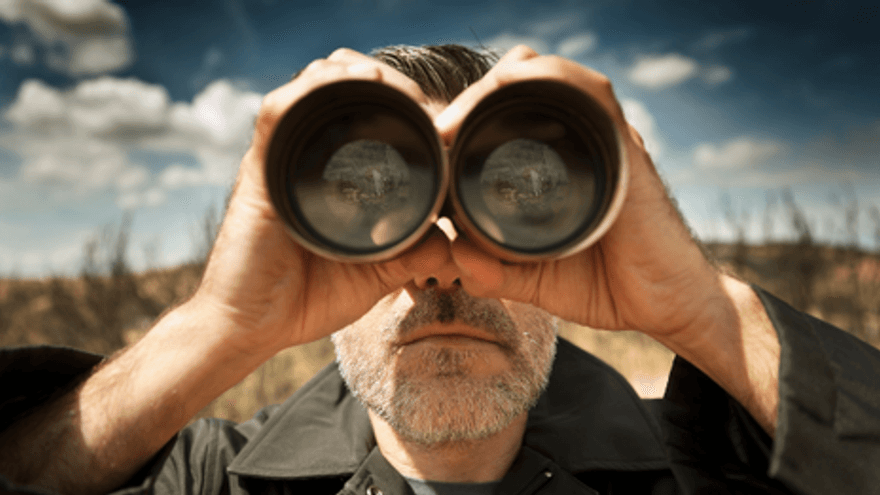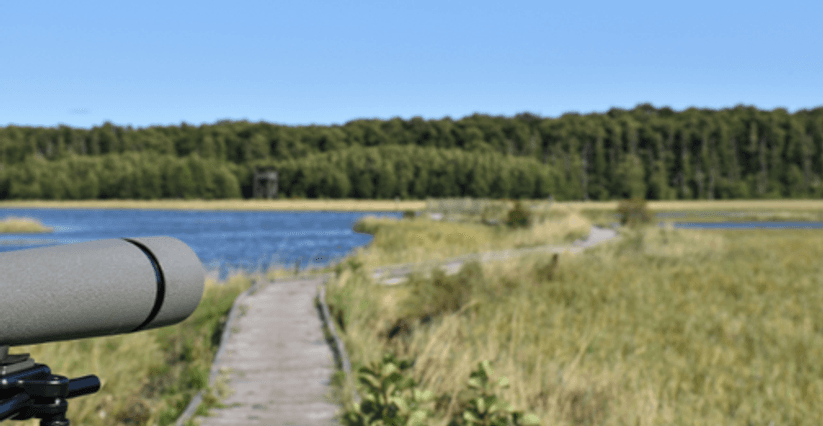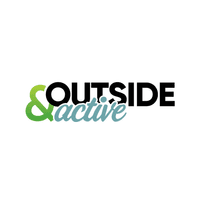6 June, 2022
When looking into optics for the first time, it can be tough to know where to start. But don't worry, we're here to help. Here we've outlined top tips to get you started.

When it comes to choosing optics, the most important factor is deciding what you'll be using the optics for such as bird watching, wildlife spotting, or stargazing. Once you've determined the purpose, you can start narrowing down your choices by considering factors like magnification, objective lens size, and more. Read on for a detailed breakdown of everything you need to know about buying optics for the first time.
There are a variety of different optics available on the market, and it can be tough to know where to start. But don't worry, we're here to help. In this section, we'll walk you through the different types of optics available and what they're best used for. Let's go through the basics first.
Binoculars: Binoculars are handheld optics that usually have a magnification of 7x or less. They're great for bird watching, wildlife spotting, and general use.
Spotting scopes: Spotting scopes are larger optics that are usually mounted on a tripod. They have a higher magnification than binoculars, making them ideal for long-range viewing.
Telescopes: Telescopes are the most powerful type of optical telescope. They're used for stargazing and other astronomical applications. We're not covering telescopes in today's how to.
There are a few factors you should consider when choosing optics, such as magnification, objective lens size, and weight.
Magnification: Magnification is the amount that an optic will enlarge an image. The higher the magnification, the more powerful the optic. However, higher magnifications can also make it more difficult to hold the optic steady.
Objective lens size: Objective lens size is the diameter of the front lens of an optic. Larger objective lenses will let in more light, making them ideal for low-light conditions. However, they can also make the optic heavier and more difficult to carry.
Weight: Weight is an important factor to consider if you plan on carrying your optics long distances. Lighter optics will be easier to carry, but they may have smaller lenses that let in less light.
When choosing between binoculars and spotting scopes, it's important to consider the type of activity you'll be using them for. Binoculars are usually smaller and lighter, making them easier to carry. They're also less expensive than spotting scopes. However, they have a lower magnification and may not be suitable for long-range viewing. Spotting scopes are larger and more powerful, but they're more expensive and difficult to carry if you're out on the trails for a long or overnight hike.
Getting a little more technical now, if you want to look at more options to help you decide which optics to go for.
Coatings: Most optics will have some type of coating on the lenses to reduce glare and improve image quality. Some common coatings include anti-reflective (AR) coatings, ultraviolet (UV) coatings, and infrared (IR) coatings.
Field of view: Field of view is the amount of area that you can see through an optic. It's usually measured in feet at 1,000 yards. A wider field of view will allow you to see more of your surroundings.
Exit pupil: Exit pupil is the diameter of the beam of light that exits the eyepiece of an optic. The larger the exit pupil, the brighter the image will be.

The numbers on binoculars represent the magnification and the size of the objective lenses. For example, a pair of 8x42 binoculars has an 8x magnification and 42mm objective lenses. For the majority of users, between 7x and 10x magnification will be sufficient. The objective lens is the second number in the equation, and a larger objective lens will result in a brighter image but bear in mind that the higher the zoom and higher the objective lens, you likely will need a very steady hand or tripod as any shake will be amplified.

As is often the case, the more you spend, the better quality, longer lasting and more durable the product. But there are still great options to be had at lower price points, so don't feel like you have to spend a fortune to get a good optic.
Quality optics can be expensive, but they'll last longer and provide a better experience than cheaper options with a clearer image over a longer field of view, for example.
Now that you've made your decision and have your new scope, it's time to test it out! Here are a few things you can do to get the most out of your new optic:
1. Read the manual: It might seem obvious, but reading the manual is the best way to learn about all the features of your new optic.
2. Find a subject: Once you've familiarized yourself with the controls of your new optic, it's time to find a subject to test it out on. If you're using binoculars, try finding a distant object like a bird or a building. If you're using a spotting scope, try finding something closer like a flower or a person.
3. Adjust the focus: Once you've found your subject, it's time to adjust the focus so that the image is clear. With binoculars, you'll need to use both eyes to focus. With a spotting scope, you'll just need to use one eye.
4. Move around: Once you've got the focus adjusted, try moving around to see how the image changes. This will help you get a feel for how the optic works and what you can expect from it in different situations.
5. Take your time: Optics can take some time to get used to, so don't worry if it takes a little while to get the hang of things. The more you use them, the more comfortable you'll become.
Everything you need to know about buying optics for the first time. Be sure to consider the type of activity you'll be using them for, as well as the magnification, objective lens size, and weight.
We hope this article has been helpful in getting you started on your journey to finding the right pair of binoculars or spotting scope. Let us know what you you went for in the end and how you're finding them and perhaps more importantly...what you spotted in the wild!

Outside & Active is the home for those who love the outdoors. Our mission is to inspire, inform and educate people about being active outdoors in a fun, safe and sustainable way. We provide inspiration, kit, tech and advice on adventure, camping, climbing, cycling, hiking, running water and winter.
Most recent articles by Outside & Active

Brooks supports trail runners to defy limits and empower their trail runs with the new Cascadia 18. The adaptable Cascadia combines DNA Loft v2 cushioning with TrailTack Green grip and a durable upper mesh to handle all terrains, providing necessary comfort and underfoot security on each surface.

Connectivity makes eBiking more customised, convenient and secure.

Various app solutions, interfaces and services as the next step for the eBike experience of tomorrow
Most recent articles in HIKING

The Ramblers, Britain’s walking charity, bring their successful Out There Award to England, empowering 18-26 year olds to embrace the outdoors with confidence.

Looking for some motivation to get you excited and active for 2024? The Beacons Challenge, taking place on Saturday 6th July 2024, may well just be that rewarding opportunity you’ve been waiting for.

Exploring the great outdoors with your dog is a fantastic way to bond and keep both of you active. You can find suitable activities for any breed, whether splashing in the surf at the beach, trekking through scenic hiking trails, or scaling mountain peaks. Therefore, this article explores the best outdoor activities, providing tips and safety advice to ensure a fun and memorable experience.